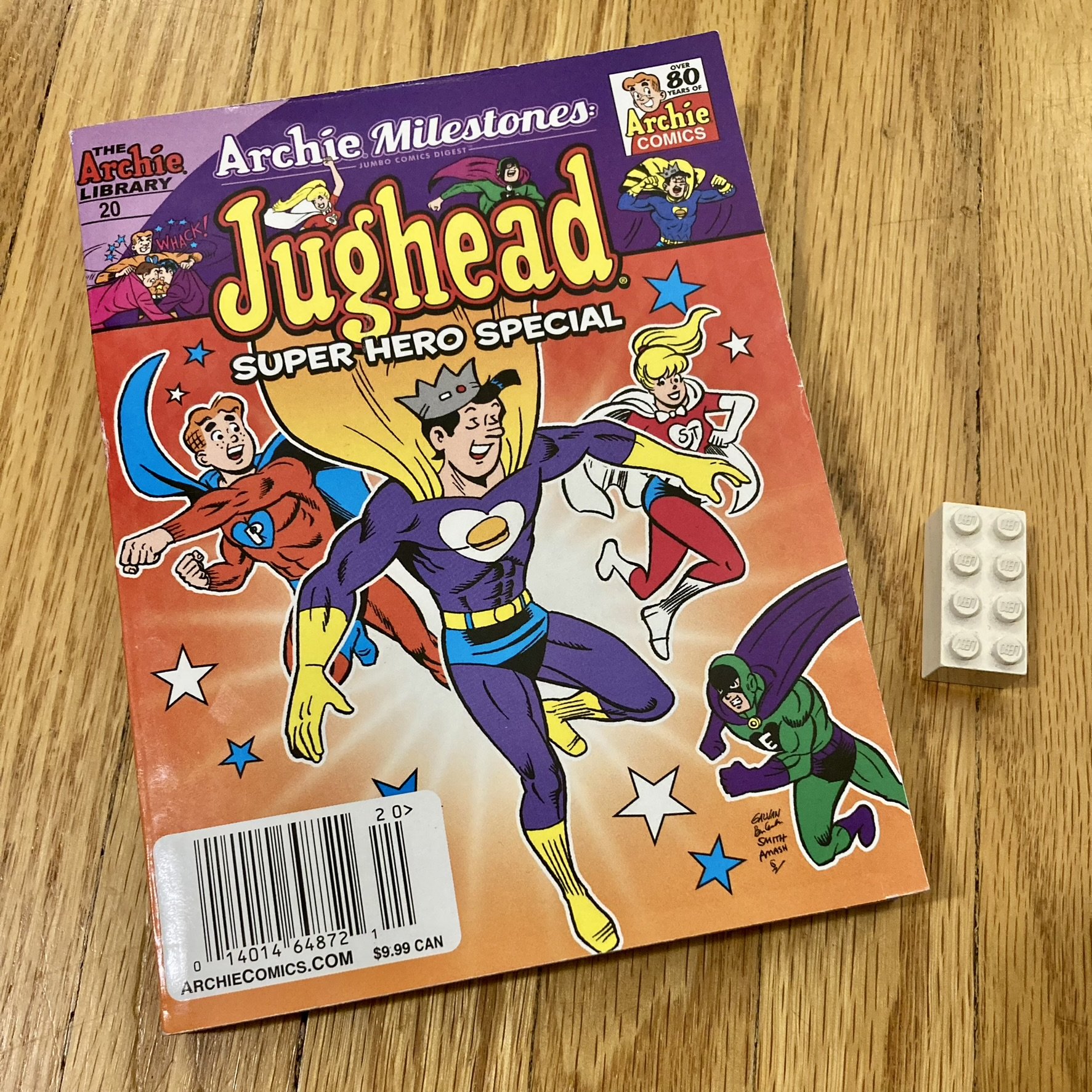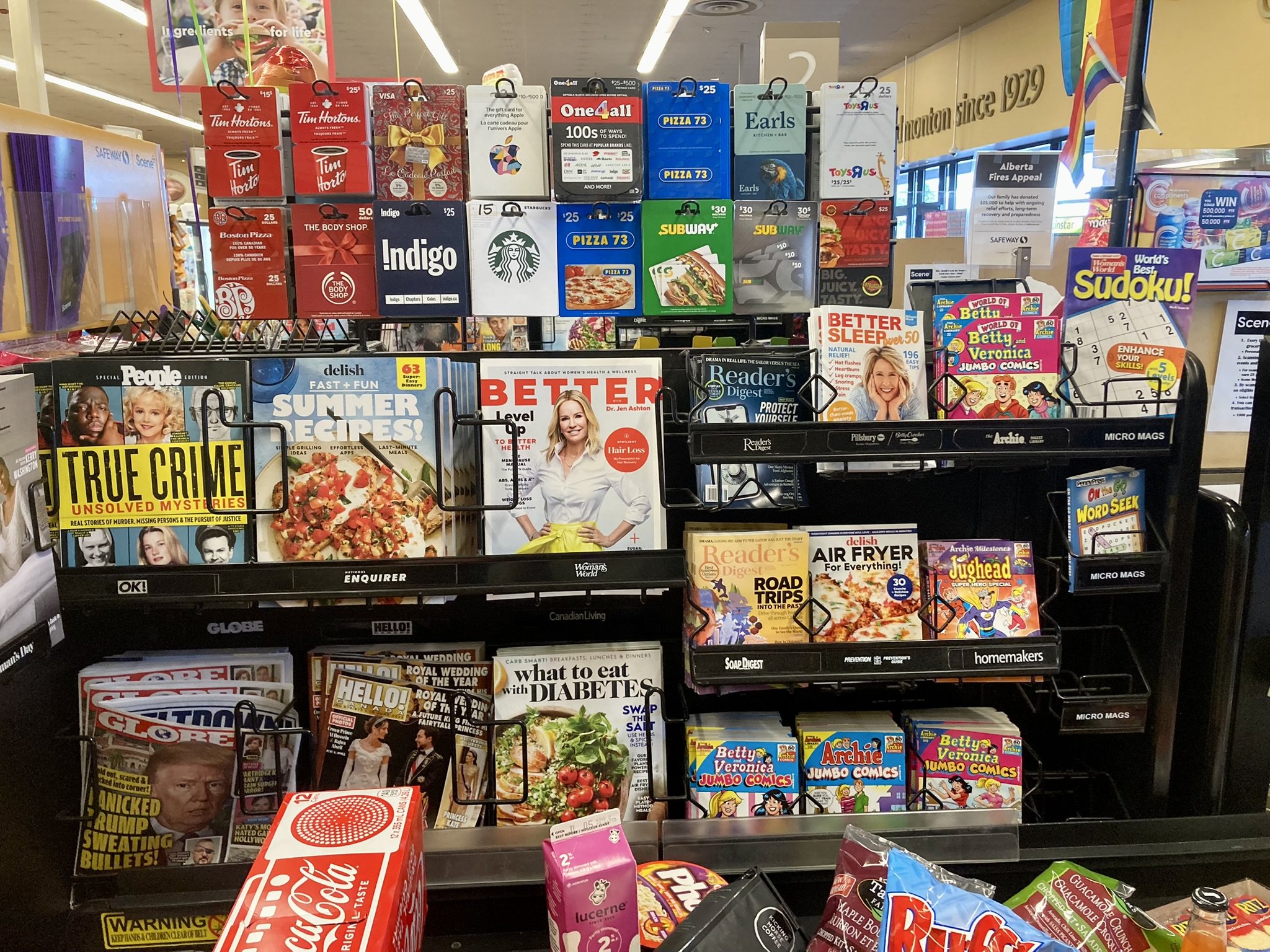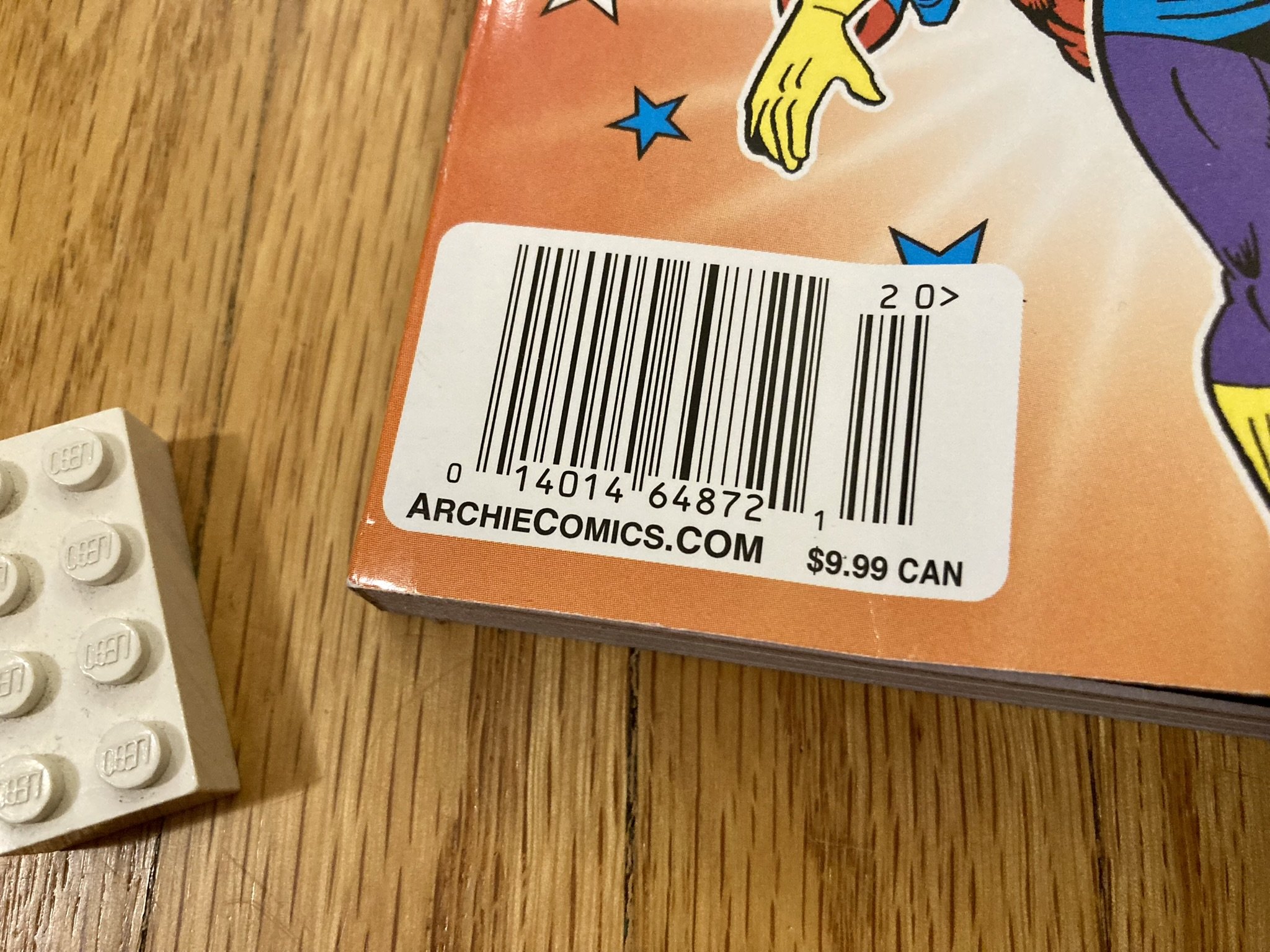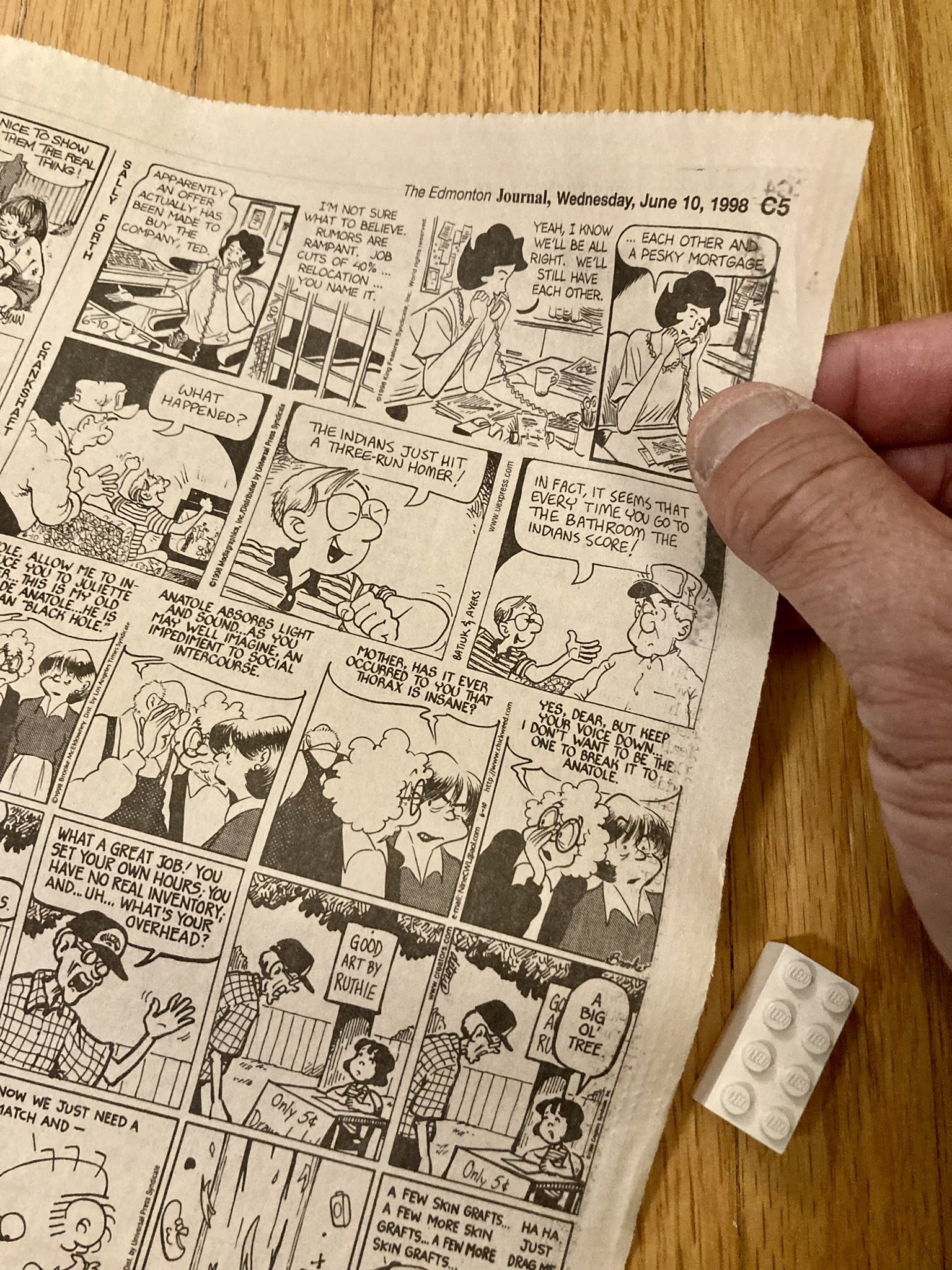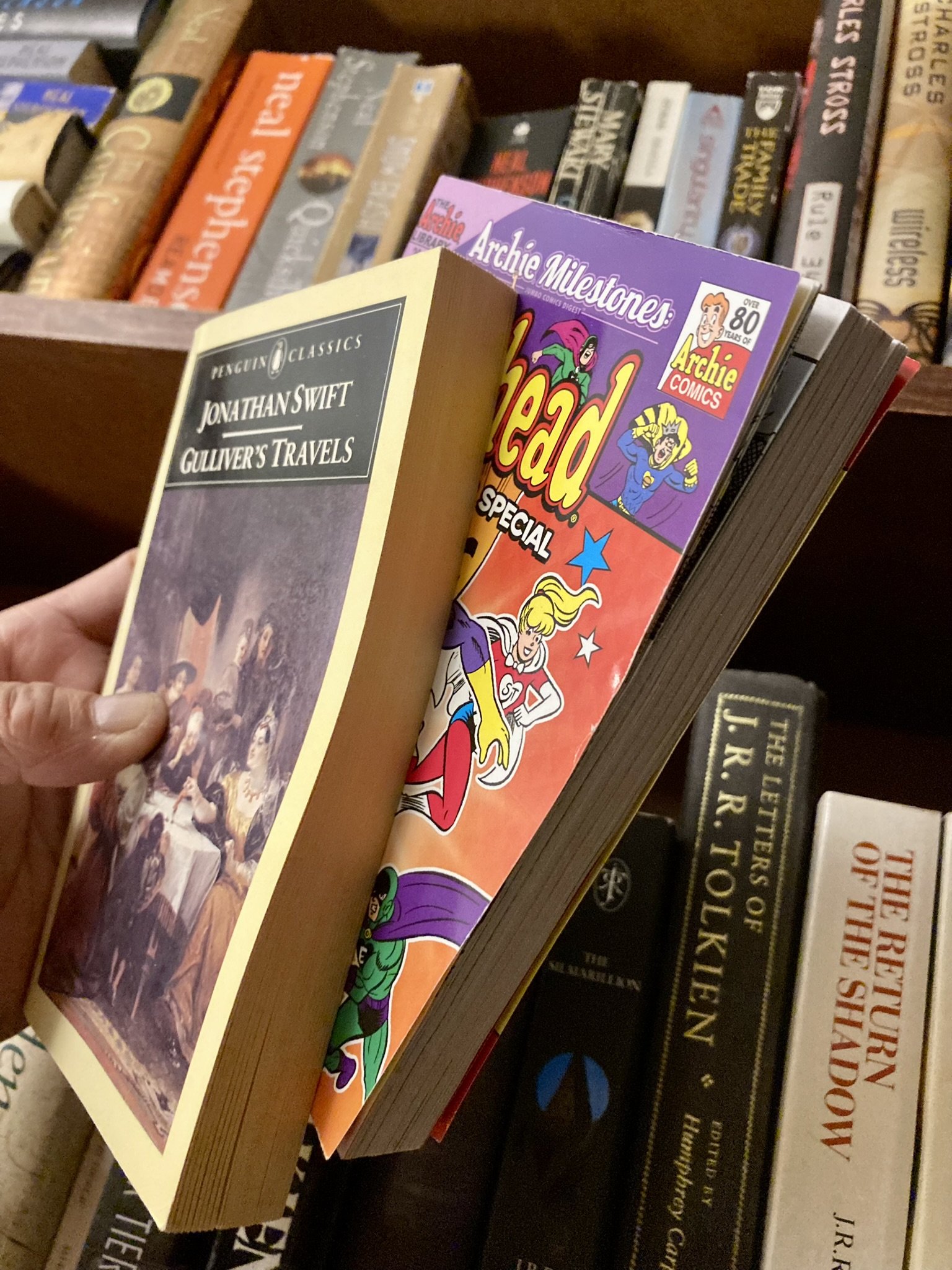Living on the wrong side of the racks
In this first post to be included under the umbrella of the Comic as Object Project, we want to share a book that is both the most recent to be acquired here at the Butterflies & Aliens Library but also a throwback to the very first comics we ever read as a kid: Archie Digests!
And it’s just what I remember… bright shiny cover on the outside…
The cover of Archie Milestones: Jumbo Comics Digest: Jughead Super Hero Special, UPC 014014648721.
… thin matte newsprint paper on the inside, albeit printed in colour where the ones I remember from my childhood were mostly black and white.
I also don’t remember them costing $9.99 when I was a kid, but we’ll get back to that.
Perhaps more interestingly from a cultural capital standpoint, I found it exactly where I’ve always found them… at the grocery store checkout, right next to the tabloid magazines.
What would you not expect to find in this same rack? Anything remotely like a “graphic novel” or “collector comic”!
The message here – in this case not so much from the comic book’s body language as… it’s neighbourhood?… The crowd it’s hanging out with? – is that Archie is as disposable as “delish fast + fun summer recipes,” sudoku puzzles, and Hello! magazine.
So no surprise than that the digest we chose to bring home only has a UPC barcode, literally marking it as “product” by its universal product code, ready to be scanned alongside my chips and milk.
Returning to the paper for its interior pages, it is literally newsprint, with the exact off white colour, rough texture, and matte finish as a page of comic strips in a newspaper.
This lower cost lower quality material also contributes to the sense that these kinds of comics are cheap and disposable, much as pulp fiction got its name because of similar quality paper used in their production.
That said, the $9.99 price tag was nonetheless a shock, but perhaps more because of how long it’s been since I last purchased one. At $9.99, this book does come in at half to a third of the price of a ‘real’ book of a similar size and format.
Perhaps to make up for that lower markup, the other distinct element of peritext that reads as mass market is the prevalence of ads, cover to cover, including the one above and this sample below…
So even though this “book” by all surface appearances is indeed a book… a block of printed pages perfect bound between a heavier stock soft cover…
A photo of Jughead Super Hero Special next to a Penguin Classics edition of Jonathan Swift’s Gulliver’s Travels, both in near identical physical format.
…much about its physical manifestation sets it apart.
So how many of these cues do you consciously notice when you pick up a comic? Its shape? Its size? Its barcode? Its paper? Its presale location?
And how might any and all of these things affect your reception of its contents?
Happy pondering!
– Winston


